Nightlife in Spain: 7 Different Ways to Experience It

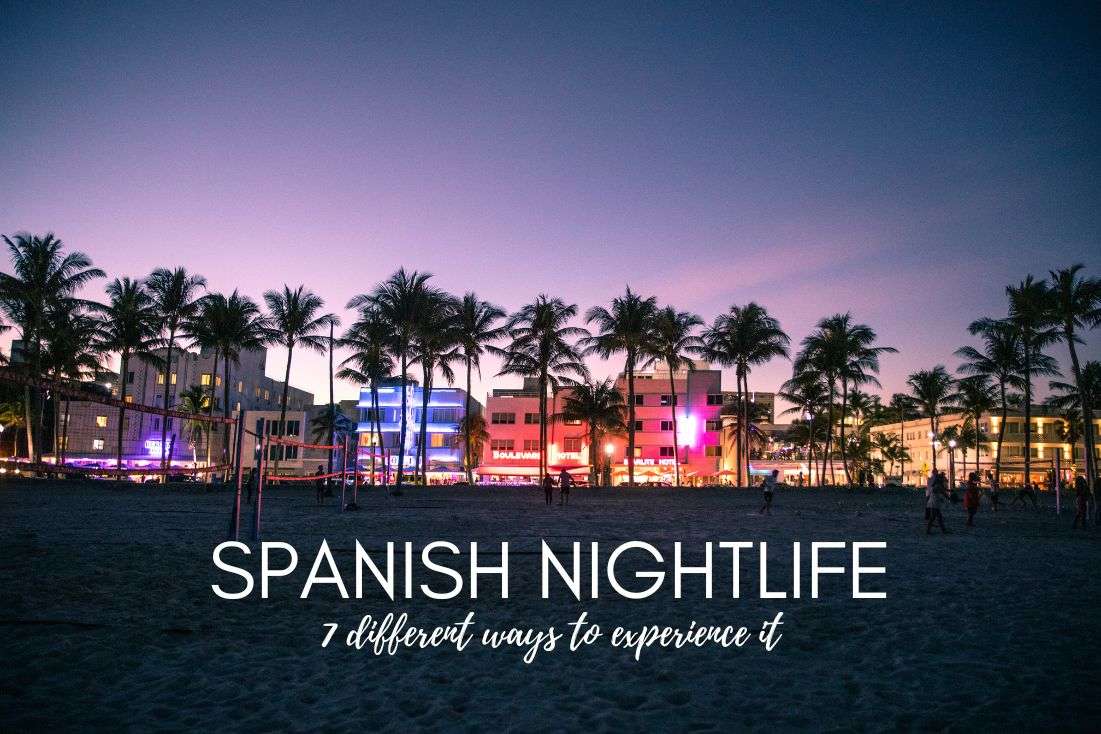
With a “work to live” mentality instead of the toxic “live to work” of many other nations, Spaniards are the kings and queens of nightlife culture. Add their perpetually high spirits, unbeatable levels of energy and talkative nature and you have the epitome of a nocturnal creature. Heck, just having dinner in Spain would be considered a night out almost everywhere else in the world.
Spaniards are sociable, they value community and family, and are balls of energy. Put those together with the great weather and strangely late dinner times and you get a nation of people who like to party!
Tip: Stay at a top hotel with a spa or wellness center so you can enjoy your stay in Spain day and night!
You might also be interested in reading:
- Andalusia Itinerary: Southern Spain in 10 Days
- Barcelona Itinerary: 5 days in Gaudí’s Metropole (with day trips)
- All You Need to Know about Spanish Tapas (+Restaurant Tips)
- The 10 Best Museums in Spain’s Top Cities
- The 16 Most Beautiful Beaches in Spain
1. Going out for dinner
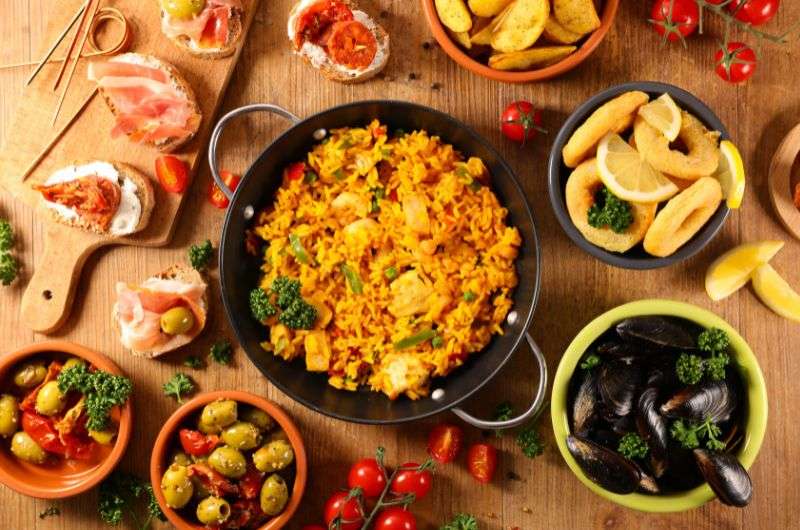
Eating dinner is kind of a social event for Spanish people
Dinner is a social affair and staying at home eating in front of the TV is not what Spaniards like to do. Entire families congregate and go out for dinner multiple times per week. And I mean the whole family—kids, grandparents, aunts and uncles, even mixed in with friends. Everyone enjoys everyone’s company.
Engaging in sobremesa is the act of table talk that inevitably happens after every meal. That time after dinner (but it also applies to lunch) where you just relax, digest, and chat. This is usually done over some drinks or coffee. It doesn’t matter if it’s a workday or weekend, you have to expect sobremesa, and never assume a dinner invitation ends after the food is in your belly. After dessert, you still have an hour or three to go! It will be the longest on weekends.
Most restaurants in Spain are closed during siesta, the couple of hours in the afternoon when people are expected to be resting, and possibly “sobremessing” after lunch. Having an early dinner isn’t a thing, unless you consider 8 pm early, and anytime until midnight is an acceptable time to eat dinner. Siesta time for restaurants is usually between 4 pm and 8 pm.
Tip: Stay in a top-rated hotel in Sevilla and experience a true Andalusian dinner for yourself!
If you can’t wait for that 9:30 pm (or later!) dinner, don’t fret, you aren’t alone. A lot of Spaniards start out their evening by ir de tapas, a sort of tapas bar hop. You go around to a few tapas bars, having drinks and sharing tapas, getting the night going and forgoing hunger until actual dinner time arrives.
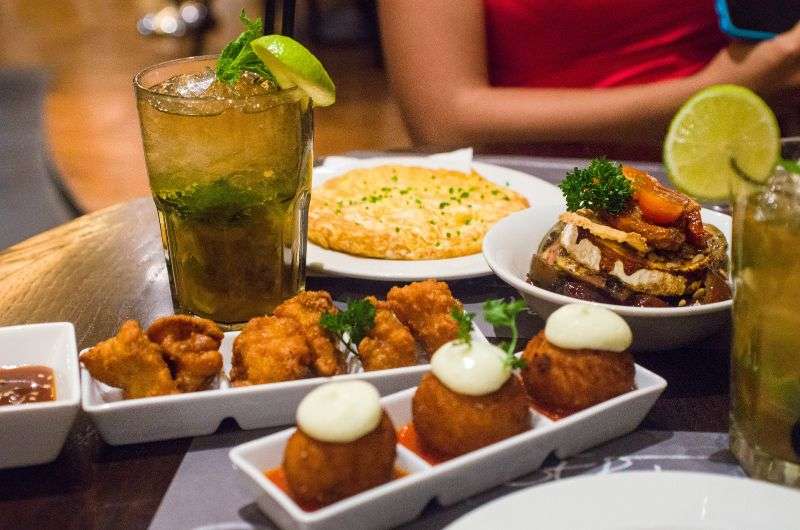
The sun’s going down, so it’s obviously time for some pre-dinner tapas!
It’s also worth mentioning that tapas bars aren’t bars per se, they’re restaurants where you’ll meet kids until midnight, and they double as breakfast bars in the morning. It’s like a local hangout for everyone at all times of the day.
Real bars won’t usually serve meals or tapas. More on those later.
One of the reasons for the late dinner times is probably the scorching summer heat in Spain, especially in the southern region of Andalusia. The streets of places like Sevilla and Granada are deserted during the day. After sunset, the crowds spill out onto every plaza and alley they can find and fill the outdoor seating of restaurants. Kind of like a zombie apocalypse but more enjoyable.
Considering the late dinner times, there’s no wonder they need a siesta after lunch every day! Spanish evenings are exhausting, especially on a work night. But meals are a social affair and are a perfect example of how Spaniards live life to its fullest.
It’s not what you eat for dinner, it’s how you eat dinner.
2. A night out at a Spanish bar
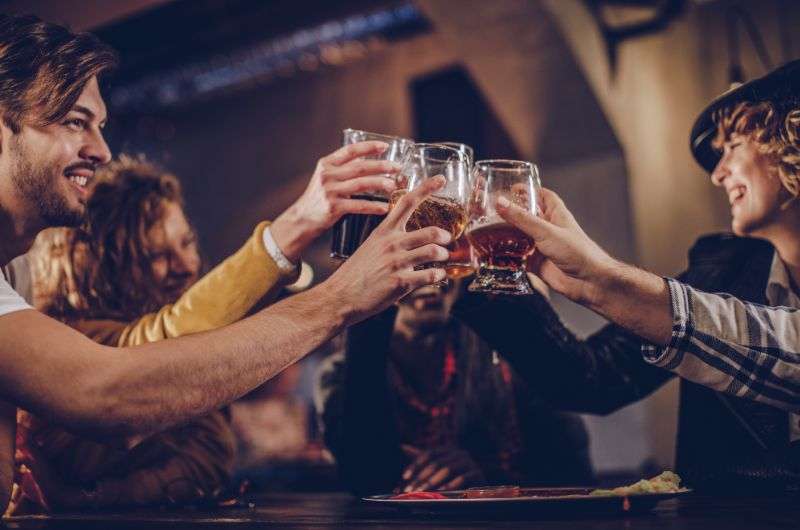
These are huge beers by Spanish standards
As I mentioned above, a bar isn’t the same thing as a tapas bar. A bar or night club is a true nighttime venue. After you have your 3-hour meal and put the kids to bed at 12:30 am, you’re ready for your night out to begin!
Many bars and clubs don’t even open until midnight, since everyone is having dinner until then, and a lot of them stay open until sunrise. There is a bar for every 165 people in Spain, which is the highest ratio in all of Europe. The number of bars in Madrid outnumbers the number of bars in all of Norway for example. No surprise in a nightlife-loving country!
For being one of the top producers of wine in the world, Spain sure loves its cerveza! Beer is a drink that can be had with any meal or at any occasion. Nobody will look twice if you order a beer with your lunch or at a business meeting. It is actually supposed to compliment the meal, which is why a lot of the beers are light lagers with a gentler taste.
As opposed to my home country, the Czech Republic, where we drink beers by the half-liter without batting an eye—that’s about a pint—, in Spain, getting a caña is the norm. This measly little 200 ml glass is smaller than our small beer! So make sure to ask for the large pinta if you’re set on staying true to your regular drinking habits. You and your huge beer will get noticed though.
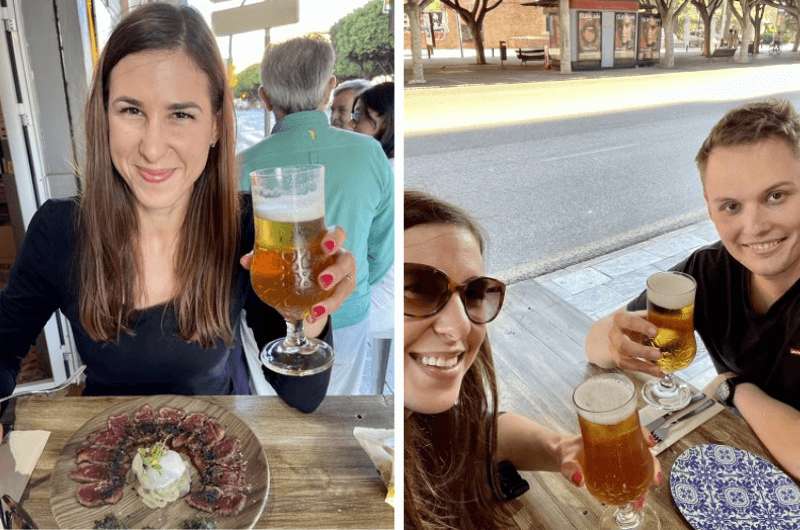
Us, very obviously not Spanish, always drinking the largest beer size they offer
The bars in Spain tend to be flashy, loud, with music playing and drinks flowing. Many also have TVs showing the latest football match, bull fight or game show. Forget tapas, especially the free variety normally found in Granada. You need to go to a tapas bar for that. A regular bar is not about eating at all.
You will pay a premium for your drinks. In some places, sitting at the bar as opposed to a table will guarantee cheaper drinks, and sitting outside will make them more expensive. It isn’t permitted to buy drinks at the bar and take them to a table outside, for obvious reasons.
Unless you’re at a busy beach bar or otherwise more touristy place where it is more common to pay for every drink after each order, the bar will most likely run you a tab that you’ll pay once you’re ready to leave. The price includes all taxes and tipping is not customary but for some small change.
13% of Spaniards drink alcohol daily, which is the second-highest rate in Europe (the gold medal goes to Portugal). Unlike other alcohol-happy nations though, they are very unlikely to binge drink. Since being visibly drunk is frowned upon, maybe combined with the fact that food is always being eaten, you don’t see Spaniards stumbling around in the streets every night. The ones you do see are probably tourists or expats that can’t handle the Spanish way.
Our top tips for enjoying Spain’s nightlife:
- Adapt to the Spanish way: Dinner never starts earlier than 8:30 pm
- Be prepared to drink a lot: Spain has the most daily alcohol drinkers
- Best nightlife in the city: Madrid and Barcelona
- The best way to experience it: Participate in holiday festivities
Bars close at whatever time the owner likes, though some large cities do regulate the outdoors noise so people who live in the city center can get some sleep, too. If you haven’t had enough by the time doors close, and if you are in one of the party capitals like Barcelona or Madrid, you can dance your way out of a bar and into an after-hours club pretty easily. Those open at dawn.
3. Drinking in public

This is ok...
Drinking alcohol in public isn’t legal in Spain, but how strictly it is enforced varies from city to city and from situation to situation.
Every region has its own rules about drinking alcohol in public, namely big cities like Barcelona have laws against drinking in the city center aside from at restaurants and bars.
There’s also a difference if you’re having a nice picnic with a few friends or family members in the park, enjoying a glass of wine with your bocadillo (a baguette sandwich), or if you’re part of a 20-person group of rowdies passing around vodka bottles. You will get shooed off or even fined in the second scenario.
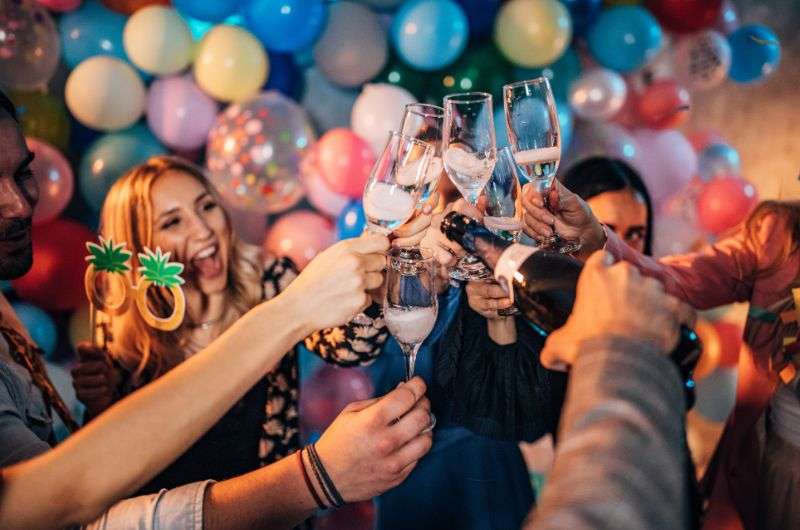
...this is pushing it.
Which brings us to the tradition mostly upheld by young adults—botellón. The word literally means ‘bottle’, and guess what’s in the bottle. Hint: it’s not the coke that’s on the label. Botellón is a pastime where groups of people gather in public areas drinking alcohol and chatting. This alcohol picnic happens at night and is meant as a cheaper alternative to going to a bar, where drinks are always expensive.
This drinking tradition has its roots in Andalusia, where workers would sit on plazas or in parks in the evenings drinking their beers instead of spending money in clubs or bars. Nowadays, mostly teenagers and young adults participate in botellóns for similar economic reasons.
Botellóns aren’t something the general public enjoys, especially the local residents. Not only can they get loud (this is Spain, afterall!), but the mess that gets left behind is always appalling. In many areas, botellóns have started to be regulated by city authorities.
Tip: Book your hotel in Granada and look for those “Prohibido El Botellón” signs.
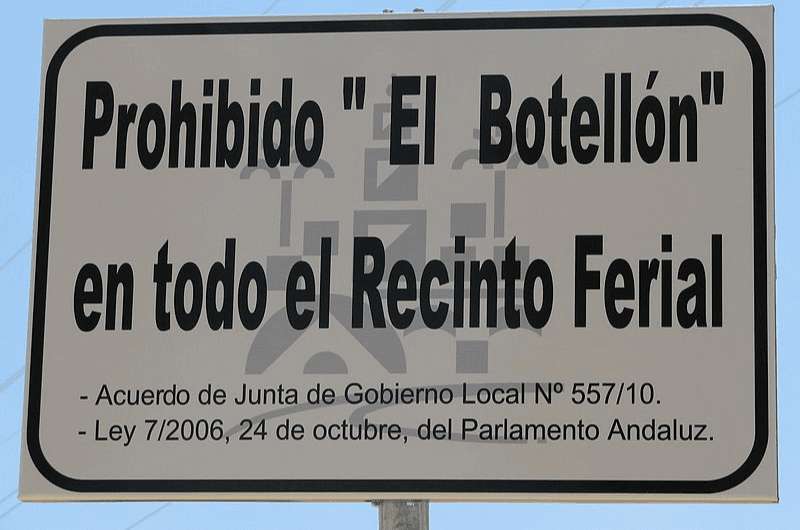
No botellóns here
What I love about this is the approach the authorities took with the rules. Instead of prohibiting botellóns altogether, they are finding ways to make all parties happy. Botellóns have been removed from residential areas in some cities, with “Prohibido El Botellón” signs popping up in the most popular areas. But these are counteracted by botellódromos, designated botellón areas.
Cities try to make botellódromos inviting by putting them in fun areas like at the pier or in a park, with lighting and police surveillance that doesn’t interfere unless absolutely necessary. Botellón partakers have expressed that there is another way to prevent botellóns: lowering club entrance fees and drink prices.
4. Nightlife as part of Spanish festivals
A sure-fire way to gage how a nation parties is to look at its festivals. The Czech Republic? Lots of eating and even more drinking. The USA? Lots of national pride and get-togethers. Thailand? Food and religious offerings.
Spain? Parades, non-stop entertainment, community-based gatherings, food, and fireworks for days! It’s all very visible in Spain. There are fireworks for every occasion imaginable and there are people in the streets talking over each other at all times of the day and night. Spaniards externalize their celebrations and there is seldom a holiday that isn’t celebrated over more than one day. I don’t know how Spanish introverts exist.
Again, a work to live mentality. And the funny thing is that most holidays have a religious connotation to them. Other countries would be sitting at church, but Spain parties like there’s no tomorrow. Plus, a lot of the time, weeks or even months of preparations are spent before the big festivities!
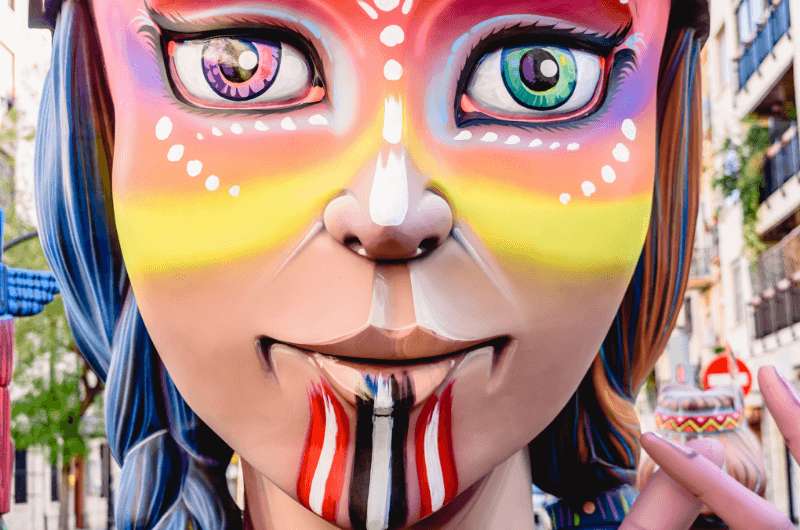
Las Fallas Festival in Valencia
Spain has no less than 14 national holidays every year. And the biggest ones last for days on end! There is no holiday in Spain without it being celebrated into the night, so you can be sure a festival means a level-up for the already great nightlife.
Santa Semana is Holy Week. Every town celebrates in their own way, but all of them have fireworks every night and parades with floats that depict Jesus’ last days. It is not a solemn celebration, with the biggest ones in Andalusia, namely Malaga, Granada and Sevilla, where the festivities last a whole week. Entire families gather in the streets, bringing chairs and snacks and just hanging out, Santa Semana-style with their community. The celebrations bring a special charge to the nightlife in Spanish cities.
Valencia is home to possibly the strangest festival that attacks all the senses—Las Fallas. The festival of daily deafening firecrackers, huge parades with and traditional costumes, fireworks that start after midnight and the finale: burning down the house! Actually, burning down the immaculate papier-mâché statues that craftsmen have spent weeks building. These things aren’t small, and when they are finally destroyed in the fire, the whole city is on fire!
You won’t be surprised that the biggest falla gets burned down at 1:30 am, a time that for me is absolutely crazy to have as an official time of anything, let alone a city-wide event popular with families. Nightlife is something Spaniards start practicing at a young age, that’s for sure. We’ve written all about Las Fallas Festival in Valencia in another post.
And then there are celebrations like the wild and crazy Carnival, where you can’t even tell when nightlife begins and ends, it just keeps going and going and... Costumes, street parties, dancing and music all over the place, and the Spaniards come out in droves to celebrate Carnival enthusiastically. Carnival is held before Lent and lasts for days. The biggest celebrations are on Tenerife in the Canary Islands, where Carnival most resembles the one in Rio de Janeiro. Sitges and Cadiz are also popular Carnival cities (and both have been mentioned on our list of top Spanish beaches).
Tip: If you are traveling during some of the biggest festivals, book your hotel in Spain far in advance. Lots of accommodation gets fully booked, and what is left closer to the date is expensive and usually not worth the price.
5. Traditional nightlife: Flamenco
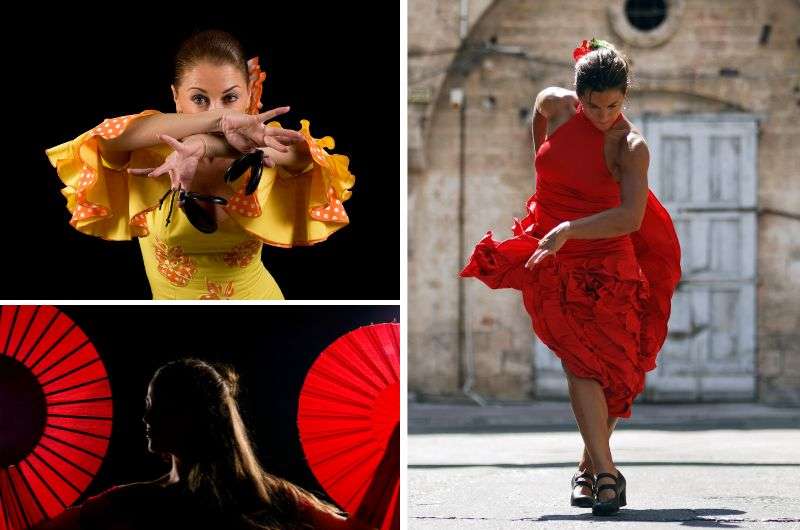
Watch out, she’s spinning!
For some traditional nightlife in Spain, try to experience an evening of flamenco! Who doesn’t want a flamenco dancer’s dress in their beer? Because in the caves in Andalusia, the dancers will be that close. You can almost smell them.
You can find a flamenco show in all parts of Spain, but it’s difficult to figure out what is a tourist trap and what isn’t. For the best shows, head down south to Andalusia, where flamenco’s root lay.
Read reviews of your chosen flamenco venue before you commit, the internet doesn’t lie. For the dress-in-the-beer experience, head over to Granada. The hilly Gipsy neighborhood of Sacromonte is full of flamenco caves, or cuevas, that host shows almost every night. What other way to experience a city’s best nightlife than to witness a traditional cultural gem in an old neighborhood?
For the most authentic shows, don’t search online. Instead, head out in the afternoon and look at the flyers that are put up on the cueva doors or ask around in local bars. They’ll know where to send you. If a venue offers more than one show per evening, choose the latest one. That’s the one the locals will be attending, and the shows will be certain to be of a higher standard.
You might get dinner first, and then you’ll be sat in a small, long room with chairs in a single row lining the walls and barely 1.5 meters between your feet and those of the person opposite you. The flamenco dancer will be using the small space in the middle to stomp, clap and throw the ruffles of her dress around. It’s an intense experience! After a flamenco show, you’ll want to continue your night at a regular bar to digest the emotions oozing from the flamenco dance you just witnessed.
6. Spanish party capitals

Fiesta!
You can party anywhere in Spain, but if letting loose at all hours of the night is your priority, you’ll need to be in one of the party capitals of Spain.
Don’t even get me started on Ibiza, I know that you know that everyone on the planet knows that Ibiza is the island of non-stop clubbing and dance parties. I don’t have anything else to say about Ibiza, just Google it.
In mainland Spain, the cities with the most vibrant nightlife are Madrid and Barcelona. Malaga has the most bars per square meter than any other city in Europe, so you won’t be lost for a place to take you in at 3 am, either.
Madrid’s nights aren’t meant for sleeping. No matter what your taste in music, there’s a venue out there for you. The Fuencarral and Huertas districts are some of the liveliest, while Salamanca is where you’ll find some of the more upscale places. Know that the bars and clubs often don’t open until after midnight, so they won’t even be at their best until after 1 am.
Barcelona is extra special because it is by the sea, and I don’t know how, but having a beach and infinitely great weather automatically means an amazing nightlife. So not only can you party at a cool bar or funky nightclub, but you get bonuses such as beach bars and boat parties. Everyone is beautiful and stylish and the parties can be everything from rowdy to sophisticated.
Tip: We’ve filtered out the top hotels in Madrid for you, so book away!
7. The morning after
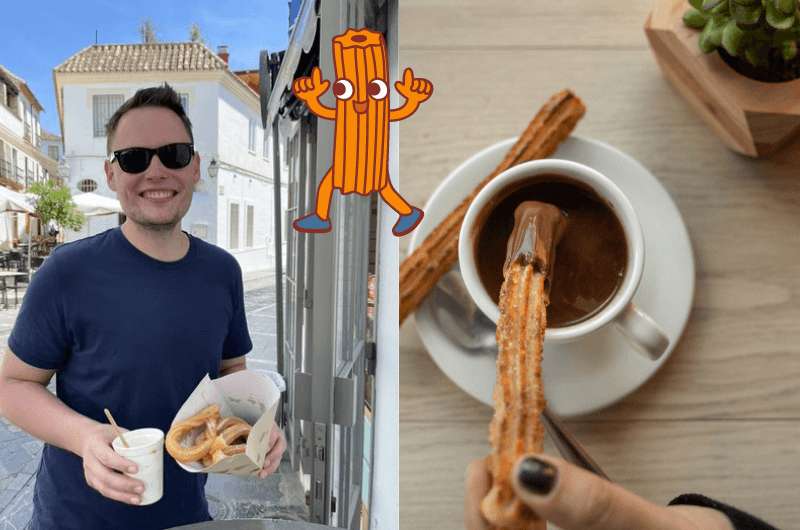
One happy churros tester
Even though I’m not big on nightlife, there is one Spanish custom related to nights out that I’m all about. The custom that happens on the morning after a night on the town—having a breakfast of hot chocolate and churros.
I’m not sure how this sweet delight is supposed to help with a hangover—it might have something to do with the fact that churros are fried—, but I’m very much into helping research the benefits of eating churros at any time of day.
Cheers!
This post may contain affiliate links. We earn a small commission if you make bookings through my links, at no additional cost to you. This helps us keep this blog free, thank you!


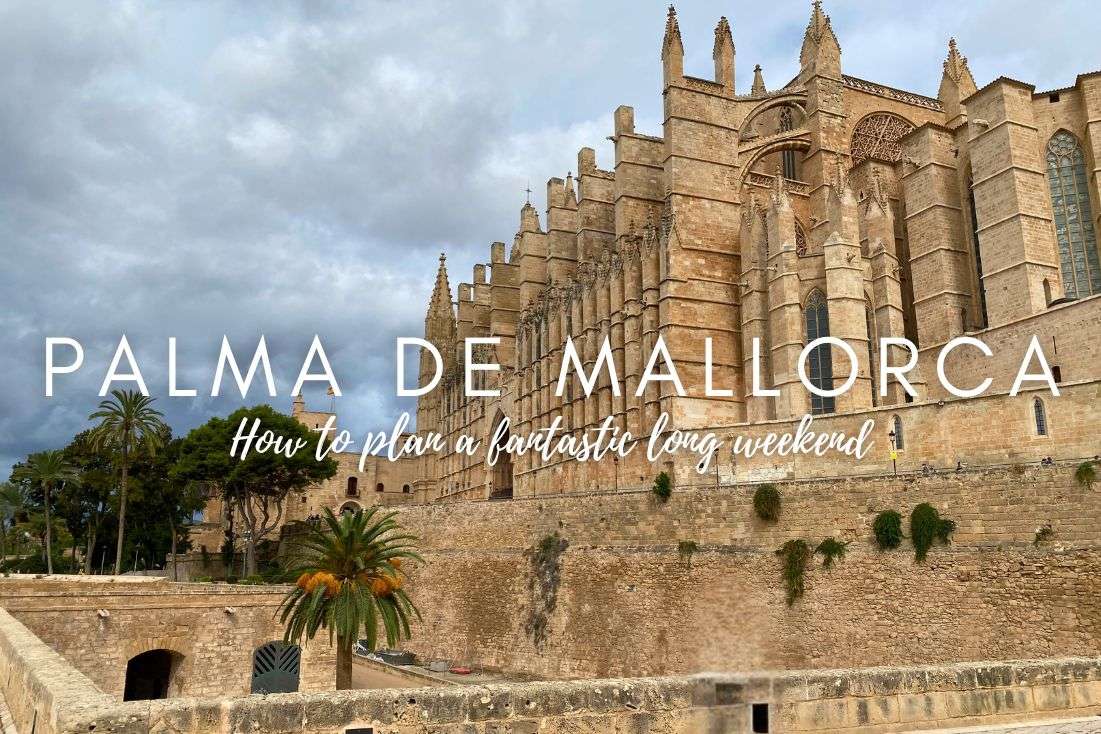
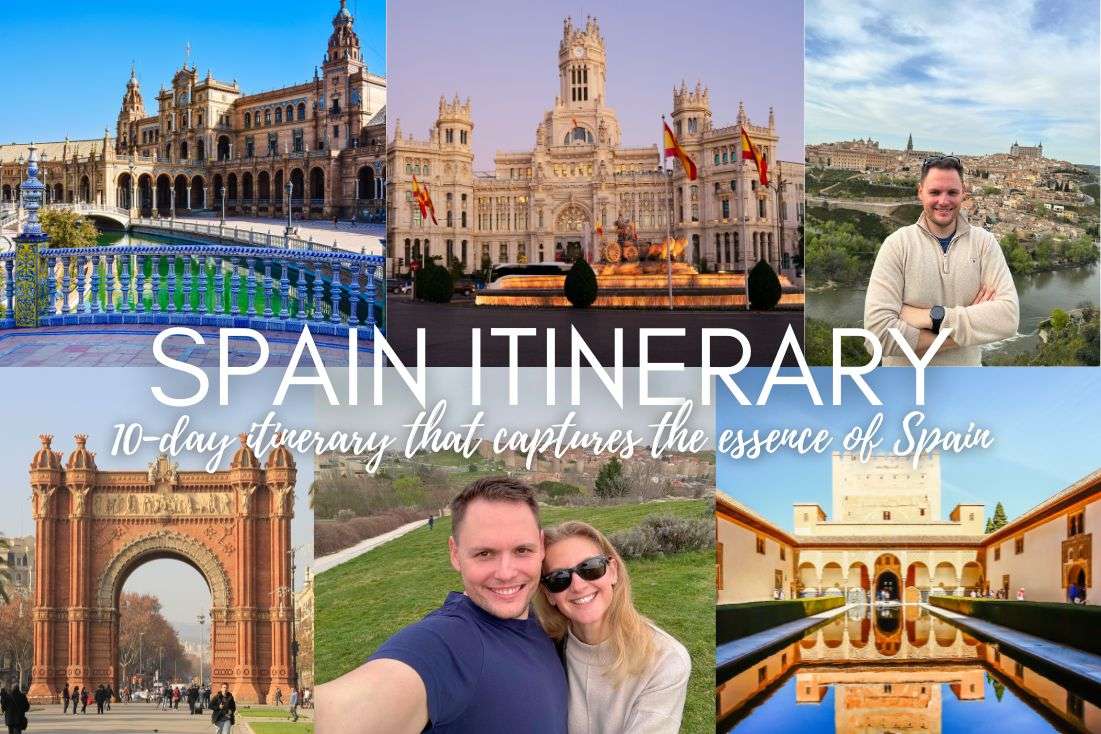
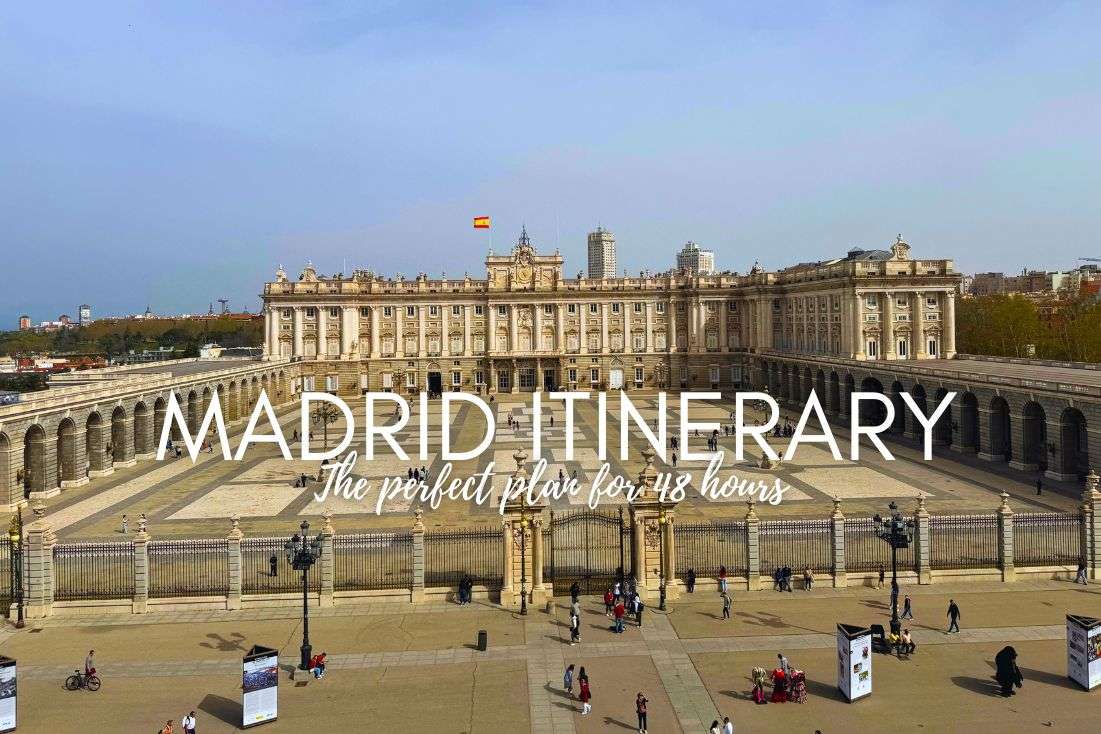





Comments | Thoughts? Give us a shout!